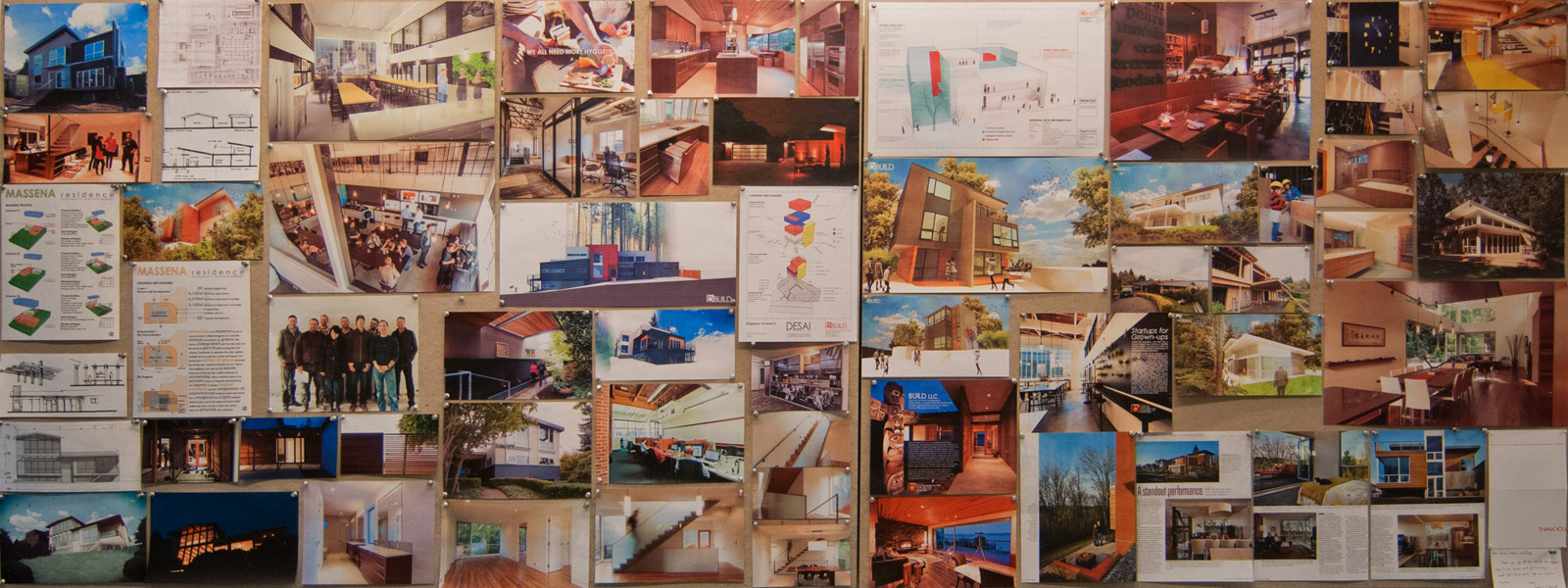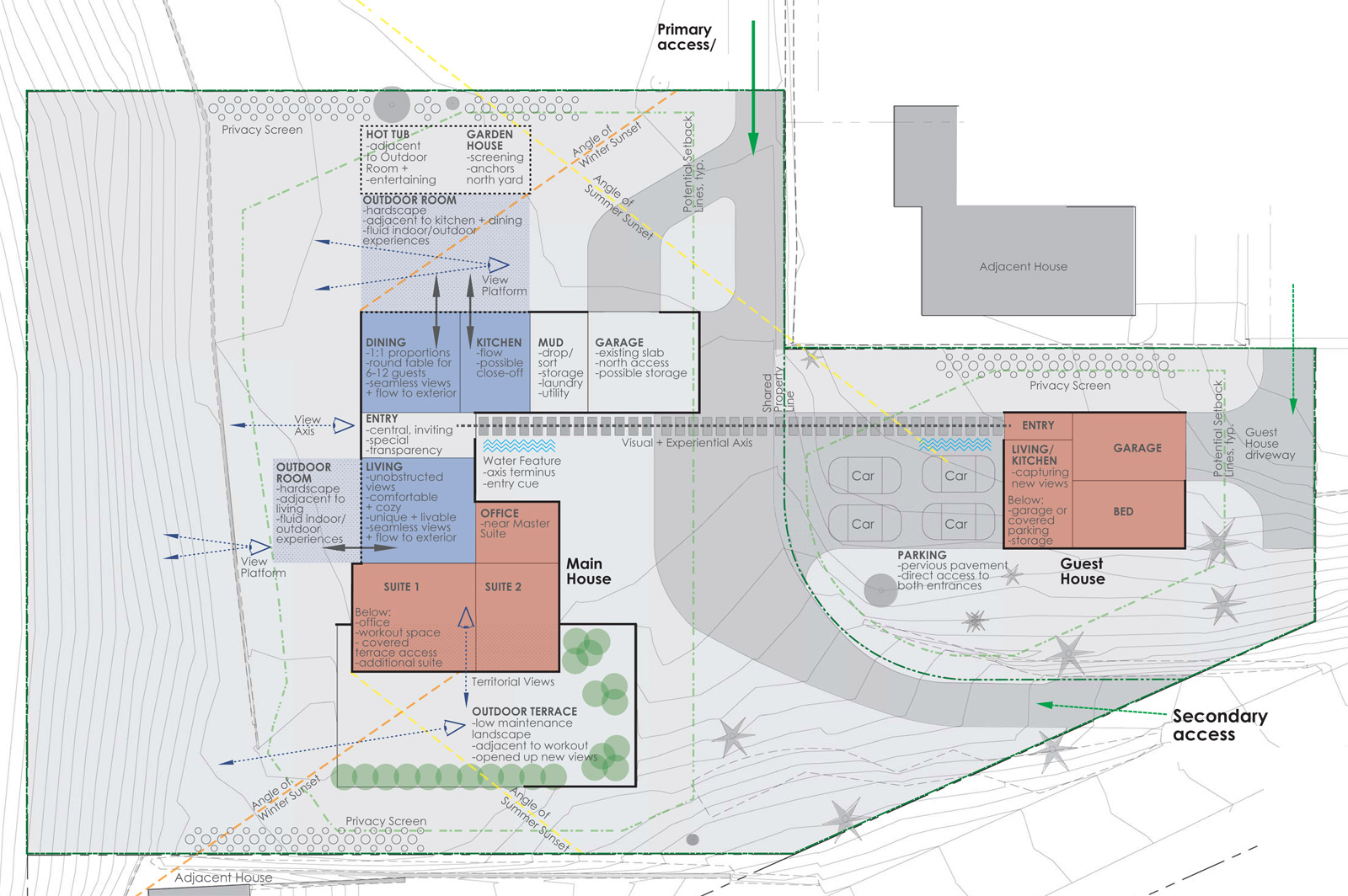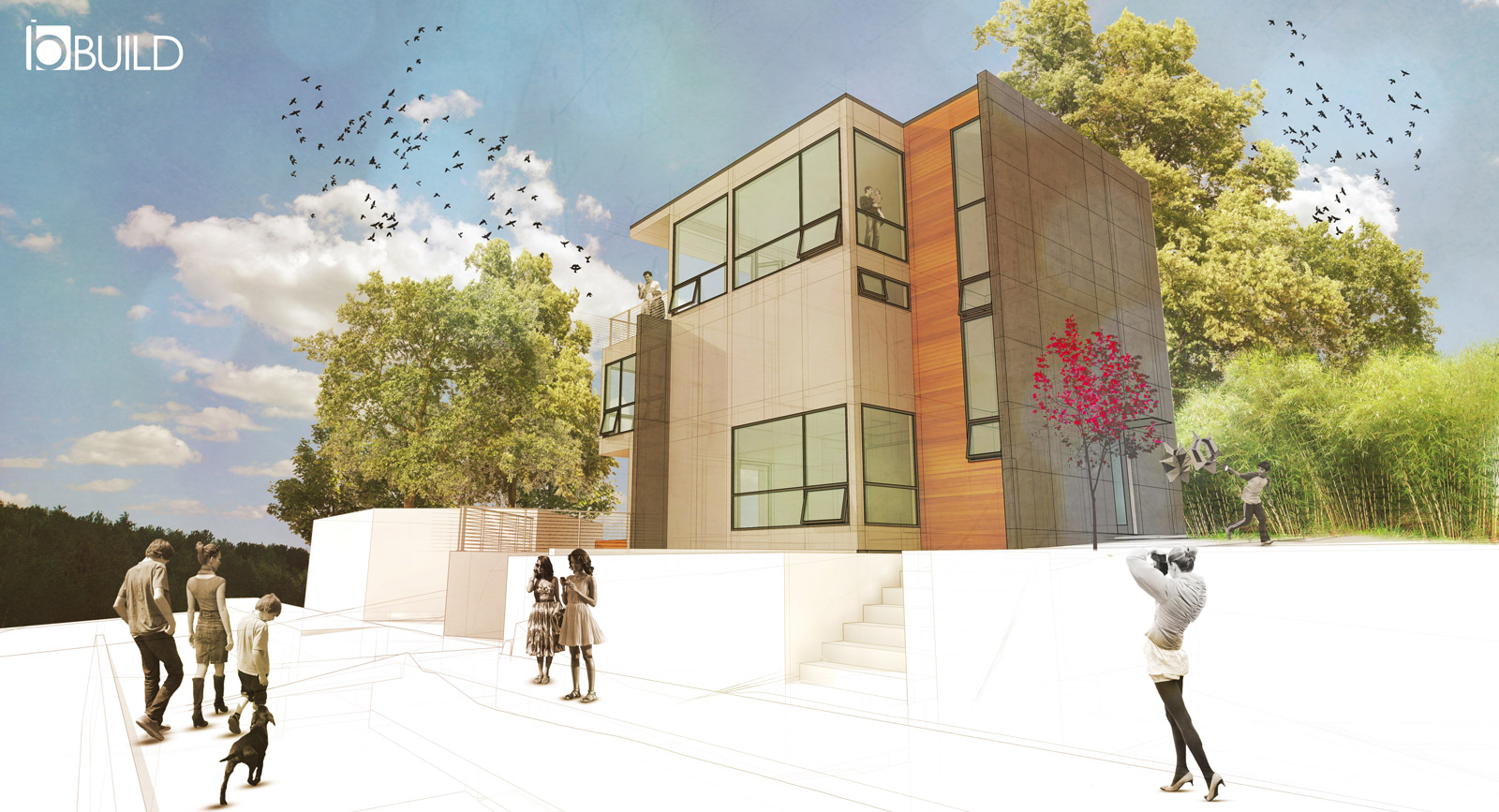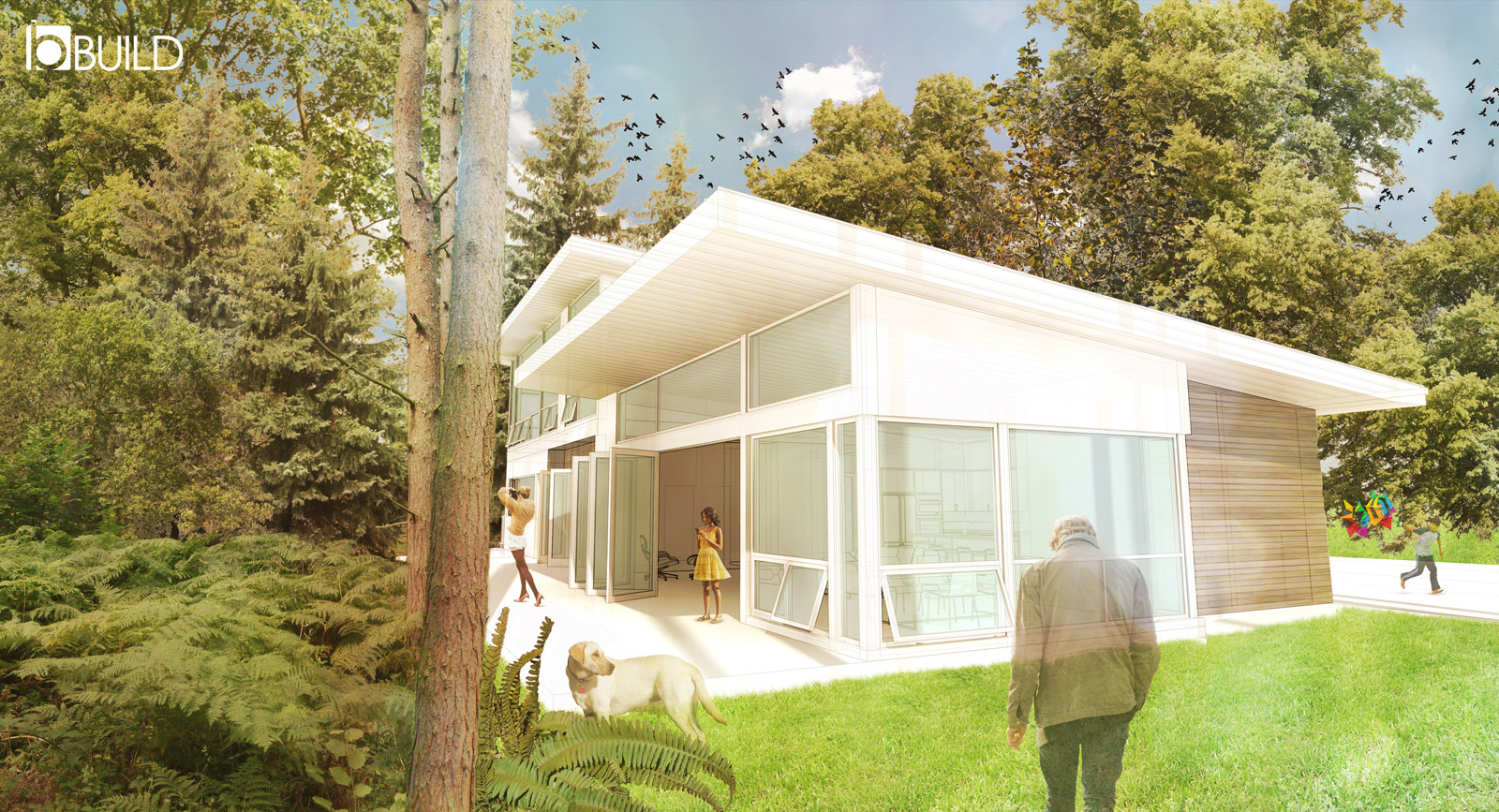
[All Images by BUILD LLC]
With the architecture industry back in full-swing, most design firms are not only busy again, but they’re being challenged by the best “problem” a firm can have: the volume of work coming through the door. Along with that volume, comes a wide range of project types and project scales. At the BUILD World Headquarters, the phone calls and emails we receive involve everything from residential remodels to multi-family and commercial developments — with new single family residences being our most common project. We’re honored by each and every potential client that reaches out to us, and like most firms, we’ve implemented a system of filters to help determine which jobs we’re a good fit for, and which jobs we’re not. As much as we can envision ourselves jumping into all kinds of interesting projects with all kinds of wonderful people who approach us, we’ve learned that our team is better matched for a specific range of project. These filters allow us architects to focus on what project types we are best suited for, and just as important, they help us identify patterns with potential projects. This post takes a closer look at 5 important filters and proposes several considerations for homeowners based on the patterns we’ve seen. Understanding these filters and taking note of the considerations should improve a homeowner’s chance of getting the right architect on board their project.
A quick disclaimer — this list primarily relates to residential work but can be related to commercial and hospitality work also (perhaps a future blog post).

PROJECT SCALE: The scale of work on a project may be the most important factor of them all. Like most small to medium-sized firms, BUILD requires the design work to have critical mass in order to take it on as a project. There is a certain threshold of construction costs where our design & construction fees are cost-effective, but below that threshold we’re not the most effective option. Project types that fit this pattern are typically fully-remodeled or new houses, involving full building permit submittals.
CONSIDERATIONS: For smaller remodel work such as interior remodels, basement remodels and second story additions, we recommend looking to solo practitioners. Solo architects tend to be nimble enough to take on a variety of small project types while scaling their fees accordingly. Hiring a medium-sized firm for a small project may invite design fees based on a more robust project type and may not make sense for a client.

PROJECT PHASING: It’s not unusual for homeowners to propose breaking a larger project into smaller phases over time. The advantages of doing so include a greater timeline to spread out the design and construction costs, the possibility of living in a home undergoing a substantial renovation, having the flexibility to make design changes based on previous phases, or being able to stop work at a natural breaking point. As compelling as these options are, the disadvantages typically outweigh the advantages. Phasing typically increases the design and construction costs, it complicates the design and construction process, and it may scare away architects because it doesn’t meet the critical mass of scale discussed above. Plus, projects are, at a minimum, an added responsibility for a client to be involved with, if not a large drain of time, energy, and money. For this reason, we always recommend that clients relocate during construction. (Nothing quite like “camping” while being emotionally drained, over many months — avoid!)
CONSIDERATIONS: Most architects are much more likely to take on the work if the entire project can be designed at once. If phasing is important to the project goals, we recommend a “master plan” to include all phases of design work. While the construction could always be broken down into separate phases at different times, the design time (and subsequent design fees) would be limited to one package of work. We also recommend getting the entire package permitted at once to optimize the building department’s time and contain the permitting fees. Lastly, any firm committed to helping their clients get projects completed should also be able to help point their clients to construction lenders that may very well allow a project to be completed in one pass rather than phasing (stay tuned for a future blog post on construction lending).

DESIGN COMPETITION: While architectural competition has become popular among the starchitects (celebrity architects doing high-profile museums around the world), the idea has never translated well to residential work. When a client explains that BUILD will be competing against multiple (as many as five or six other) architects, it’s almost immediate grounds to politely bow-out of the project consideration. While architects like a healthy amount of competition, it’s not difficult to do a quick time vs. value calculation and conclude that the time involved in competing would be better spent on projects you already have on your desk. Current clients tend to appreciate the commitment as well.
CONSIDERATIONS: In the information age, it’s easier than ever for homeowner’s to do their homework on design firms. Between an architecture firm’s website, their blog, what they’re broadcasting on Facebook and Twitter, and most importantly, what other forms of social media are saying about them, most homeowners can get an accurate snapshot of a design shop. Social media alone should allow a homeowner to filter their own list down to two or three firms. Add in some references and a completed project visit (or two), and selecting one architect should be straight-forward and painless — for everyone involved.

DESIGN AS PRIORITY: Any architect worth their college diploma and extensive licensing requirements needs to be proud of their design work when the project is complete. Potential clients that express the importance of design on their project will typically elicit more attention from an architect. Client’s committed to good design show it in a variety of ways that may involve having a clear idea of their goals, making decisions, and being organized with their thoughts. As architects, we are not looking for a client to have set thoughts on what the project should look like or how it should lay-out. That’s our job. We typically guide our clients in a process that achieves a relatively clear pathway to a functional and elegant design solution. It helps when everyone is on-board with this approach and equally excited about the value of good design.
CONSIDERATIONS: We understand that there are many things that compete for a client’s hard-earned dollars; we have similar goals as many of our clients and we also have kids (some heading toward things like braces and, before we blink, college). We appreciate the amount of money that it takes to complete a substantial remodel or new home. So, we always emphasize in our potential client meetings that design quality should be a primary motivation so that clients can feel committed to putting the resources (or as previously mentioned, resources and a construction loan) into the project.

FINANCIAL HONESTY: In order to correctly determine the practicality and feasibility of a project, architects need authentic numbers to start with. A potential client that deliberately low-balls the target budget makes it difficult for the architect to determine whether or not the project is a good fit. In fact, a responsible architect would feel compelled to tell a client straight up that their budget and intended project don’t align. In essence, a low-ball strategy may rule out a project or an architect from consideration that may have otherwise been the right fit. We understand this takes some trust which may not be developed until a client/architect relationship is established and some time together has passed. All the more reason for a client to choose a group that has a long track record of establishing budgets early in the design process, and delivering finished projects under those terms.
CONSIDERATIONS: If a client feels the need to state an unrealistically low budget with the architect, so that feared cost overages balance the costs out to what they really want to spend — they’ve got the wrong architect to begin with.
There are many other filters and considerations to finding the right fit between architects and homeowners but, from the patterns we’ve observed, these 5 matter the most.
Cheers from Team BUILD





